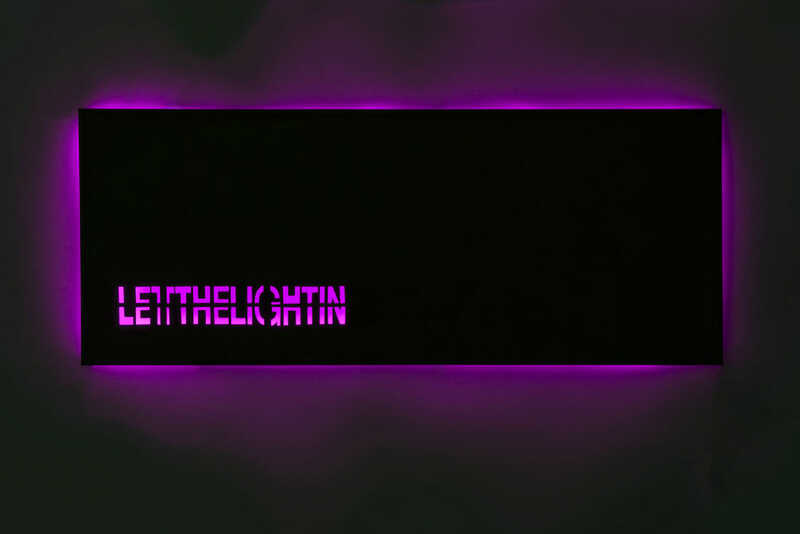The minimalist sculpture in question, with its rigorously Euclidean form, is a striking example of how art can address profound and urgent issues such as the degradation of our ecosystem during the Anthropocene epoch. Its simple elegance and powerful message come together to create a thought-provoking piece that encourages reflection and contemplation.
The sculpture features the words "Let the light in" cut into its form, and these words are illuminated, casting a gentle glow. This phrase, while seemingly straightforward, carries a deeply symbolic and resonant message. It serves as a call to action and an invitation to reevaluate our relationship with the natural world.
The minimalist design, characterised by clean lines and geometric precision, stands in stark contrast to the chaotic and intricate web of ecological systems that make up our planet. This juxtaposition highlights the detachment that often characterises our human-made constructs from the complex, interconnected reality of the natural world. The Euclidean form represents the structured order of our designed environments, while the illuminated words disrupt this order, signalling the need to break free from our human-centric perspective.
"Let the light in" is a phrase that resonates with hope and transformation. It suggests that despite the ecological challenges we face, there is still an opportunity for positive change. The light that emanates from these words acts as a beacon, guiding us toward a more enlightened and sustainable future. It signifies our collective responsibility to acknowledge the damage we have caused to the ecosystem and take steps to rectify it.
Conceptually, this sculpture prompts viewers to consider their role in the Anthropocene and the impact of human activities on the environment. It invites us to let the light of awareness into our consciousness and confront the environmental crises that threaten the planet. The phrase encourages us to break down the barriers that separate us from nature and to become active stewards of the Earth.
In a world increasingly dominated by environmental concerns, "Let the light in" serves as a powerful reminder of our capacity for positive change. It asks us to reexamine our values and priorities and to actively work toward a sustainable and harmonious coexistence with the natural world. This sculpture is a beacon of hope in the face of ecological degradation, a call to action that urges us to let the light of awareness guide us toward a brighter, more sustainable future.
